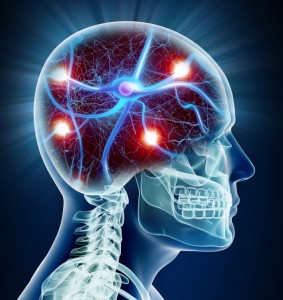 Opioid drugs are derivatives, or synthetic duplicates, of morphine or codeine extracted from the opium poppy plant Papaver somniferum. Doctors prescribe opioid drugs for therapeutic purposes because this class of drugs eases pain and calms anxiety. Recreational users favor opioids because these drugs create a pleasant, euphoric feeling. Patients and recreational users rely on the primary physiological and neurological effects of opioids, but both may suffer from unwanted side effects associated with opioid use.
Opioid drugs are derivatives, or synthetic duplicates, of morphine or codeine extracted from the opium poppy plant Papaver somniferum. Doctors prescribe opioid drugs for therapeutic purposes because this class of drugs eases pain and calms anxiety. Recreational users favor opioids because these drugs create a pleasant, euphoric feeling. Patients and recreational users rely on the primary physiological and neurological effects of opioids, but both may suffer from unwanted side effects associated with opioid use.
Neurological Effects of Opioid Use
Opioids work by attaching to specific proteins, known as opioid receptors, in the brain, spinal cord, digestive tract, and elsewhere in the body. In the central nervous system, opioid receptors are located mainly in the brainstem and spinal cord. When opioids bind to these receptors, they change the way the brain perceives pain. Opioids cause other effects in the brain, including drowsiness and confusion. The drug also affects areas of the brain associated with judgment and decision-making.
Opioids also act directly on the part of the brain, controlling respiration that suppresses breathing. This condition, known as respiratory depression, sometimes occurs after large doses of opioids and can result in death.
This class of drugs also acts on the brain’s reward system. Human brains are wired to repeat life-sustaining activities, such as reproduction and eating food, through reward pathways in the brain that make these activities seem enjoyable. Opioids change these pathways by over-stimulating reward circuits in the brain.
For over 25 years, people from all over the world have chosen Waismann Method as their opioid detox provider.
We know the challenges you face and the importance of creating a unique and personal experience for you right from the start.Call for Detox Options 1-800-423-2482
Repeated use of opioids causes changes in the structure and function of the brain. Over-stimulation of the reward circuits causes the brain to try toning down the activity by reducing the brain’s number of receptors. Fewer receptors decrease the euphoric effects of opioids, so the consumer must take a stronger dose of the drug to achieve the same effects, meaning the individual has developed a high tolerance to opioids.
Physiological Effects of Opioid Use
Opioids also cause physiological effects in various body locations, especially in those containing large numbers of opioid receptors. One type of muscle tissue, known as smooth muscle, is rich in opioid receptors. Smooth muscle allows hollow organs, such as the heart, blood vessels, intestines, and other digestive organs, to contract. Contraction of smooth muscles allows the heart to pump blood, blood vessels to control blood pressure, and the gastrointestinal tract to move food and stool.
Opioids stiffen smooth muscle in a way that makes body tissues too rigid to function correctly. Smooth muscle rigidity causes side effects. Opioids cause constipation because smooth muscle stiffening prevents the intestines from pushing stool along the digestive tract. In contrast, smooth muscle rigidity in blood vessels causes blood pressure problems, and stiff heart muscles can result in cardiovascular problems. Opioids can also affect the smooth muscles in the eyes to pinpoint pupils, especially in overdose cases. There can also be effects on the smooth muscles in the skin.
Implication and Effects of Opioid Use on the Physiological and Neurological Systems
The human body alters its own neurological and chemical makeup to survive long periods of opioid use. With continued use, the body alters itself to better deal with a sluggish digestive tract and poor circulation. In time, the body becomes dependent on a certain level of opioids to function correctly.
As opioid levels plummet, a drug-dependent body reacts in those areas rich in opioid receptors to cause specific opioid withdrawal symptoms. Vomiting and diarrhea indicate the struggle for chemical balance in the gastrointestinal tract, smooth muscle activity in the blood vessels causes blood pressure to rise. Smooth muscle response in the heart causes rapid heartbeat during withdrawal; when an opioid-dependent person quits “cold turkey, “ the smooth muscles in the skin cause it to become pale, cold, clammy with goosebumps – much like the skin of a plucked bird.
In addition to increased tolerance, long-term opioid use can lead to neurological changes that prolong substance abuse. The reward pathways’ changes make the individual feel less rewarded by things that used to please him, for example, to feel a sense of satisfaction only through drug abuse eventually. The neurological changes cause significant changes in his thought processes. All decisions lead back to doing more drugs and behavioral changes that cause separation from those friends and family that might otherwise intervene in his drug use.
Opioids have many therapeutic effects, especially for those suffering from pain. However, this class of drugs also causes other physiological and neurological effects that may cause ill health.
Sources
Opioid Analgesics and the Gastrointestinal Tract
Expression of Functional Delta Opioid Receptors in Vascular Smooth Muscle
Opioid Analgesic Drugs
Neurological Consequences of Repetitive Opioid Use
How Drugs Affect Neurotransmitters





